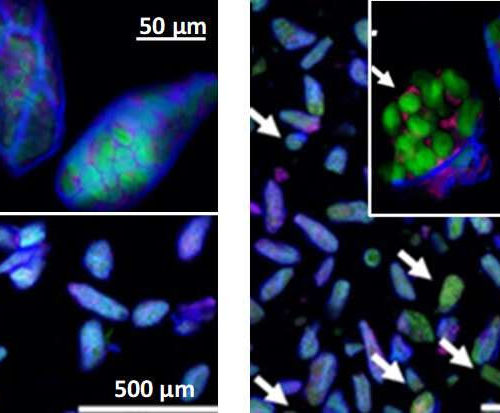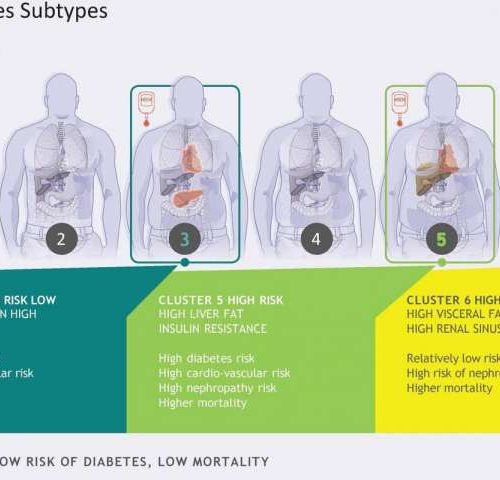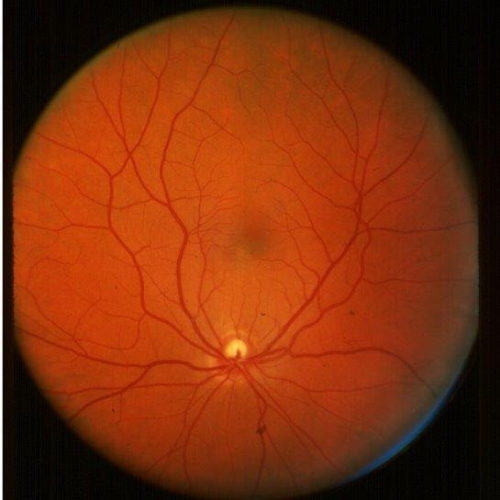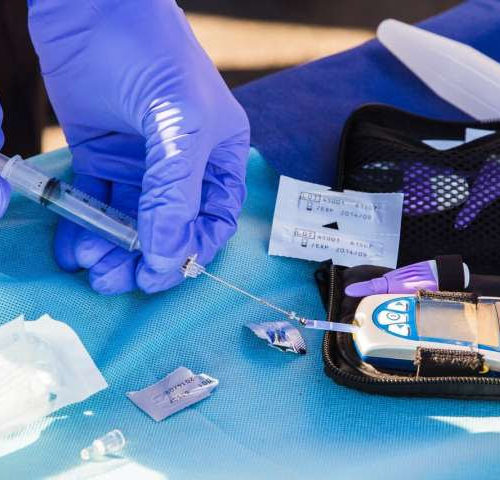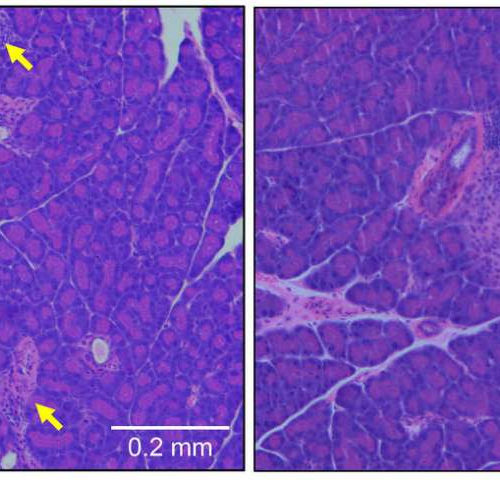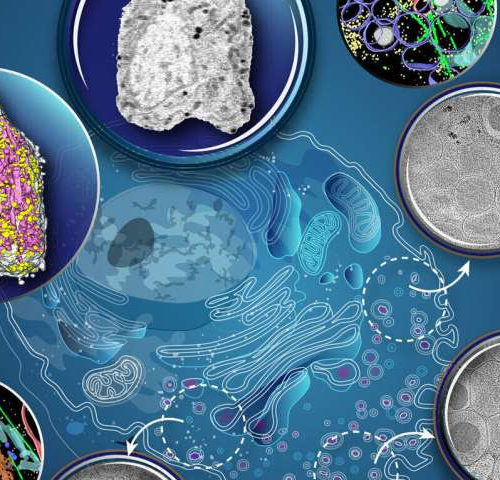by Quadram Institute Left: PulseON flour, looked at under the microscope, shows the starch (green) remains inside the plant cell wall (blue), which protects it from digestion. Right: In normal milling and processing, many plant cells rupture, exposing the starch and making it much more digestible. Credit: Quadram Institute Researchers from the Quadram Institute and...
Category: <span>Diabetes</span>
Prediabetes subtypes identified
by Deutsches Zentrum fuer Diabetesforschung DZD In people with prediabetes, there are six clearly distinguishable subtypes (clusters), which differ in development of the diseases, risk for diabetes, and development of complications. Credit: IDM All prediabetes is not the same: in people in the preliminary stages of type 2 diabetes, there are six clearly distinguishable subtypes,...
Routine eye scans may give clues to cognitive decline in diabetes
JOSLIN DIABETES CENTER IMAGE: OPHTHALMOLOGY EXAM OF PATIENT WITH DIABETES CREDIT: BEETHAM EYE INSTITUTE/JOSLIN DIABETES CENTER BOSTON – (January 4, 2021) – As they age, people with diabetes are more likely to develop Alzheimer’s disease and other cognitive disorders than are people without diabetes. Scientists at Joslin Diabetes Center now have shown that routine eye...
Research shows a few beneficial organisms could play key role in treating type 2 diabetes
by Steve Lundeberg, Oregon State University Credit: Unsplash/CC0 Public Domain Researchers at Oregon State University have found that a few organisms in the gut microbiome play a key role in type 2 diabetes, opening the door to possible probiotic treatments for a serious metabolic disease affecting roughly one in 10 Americans. “Type 2 diabetes is in fact...
UVA Tests ‘Radically Different’ Approach to Managing Type 2 Diabetes
A researcher at the University of Virginia School of Medicine is testing what he calls a “radically different” approach to managing type 2 diabetes for those who can’t or don’t want to lose weight. Daniel Cox, professor of psychiatry and internal medicine, said his program “flies in the face of conventionality” in that it doesn’t...
Testosterone can prevent type 2 diabetes in men
by University of Adelaide Credit: Unsplash/CC0 Public Domain The largest investigation of testosterone treatment ever undertaken has shown that, over and above the effect of a lifestyle program, treatment with testosterone prevents or reverses newly diagnosed type 2 diabetes in men. The study, known as T4DM (Testosterone for the prevention of Diabetes Mellitus), was led by...
Water may be an effective treatment for metabolic syndrome
UNIVERSITY OF COLORADO ANSCHUTZ MEDICAL CAMPUS AURORA, Colo. (Dec. 15, 2020) – Researchers at the University of Colorado Anschutz Medical Campus have discovered that fructose stimulates the release of vasopressin, a hormone linked to obesity and diabetes. They also found that water can suppress the hormone and alleviate these conditions in mice. “The clinical significance of this...
New screening platform leads to discovery of next-generation prodrugs for type 1 diabetes
BRIGHAM AND WOMEN’S HOSPITAL With nearly 2 million Americans battling type 1 diabetes, it is no surprise that clinical therapies for the disease are constantly evolving and improving. In type 1 diabetes mellitus, the body’s immune system attacks and destroys insulin-producing β-cells. As a result, people living with type 1 diabetes lose insulin secretion and...
Targeting T cell protein could prevent type 1 diabetes, study suggests
by Rockefeller University Press Pancreatic tissue from a type 1 diabetic mouse (left) shows large numbers of infiltrating immune cells and a reduction in the size of β cell-containing islets of Langerhans (yellow arrows). These symptoms are prevented by deletion of the gene encoding OCA-B (right). Credit: © 2020 Kim et al. Originally published in Journal of...
Researchers develop new way to watch pancreatic cells package insulin
by University of Southern California Scientists develop new methods to peer deeply inside insulin-producing pancreas cells. Credit: Katya Kadyshevskaya For the first time, scientists have peered deeply inside a pancreatic cell and observed it packaging insulin and responding to a drug treatment, an intimate look at the mechanisms responsible for preventing diabetes. A team of scientists—led...

